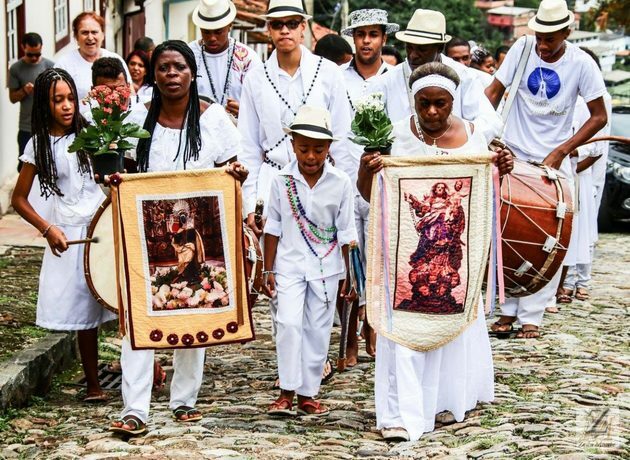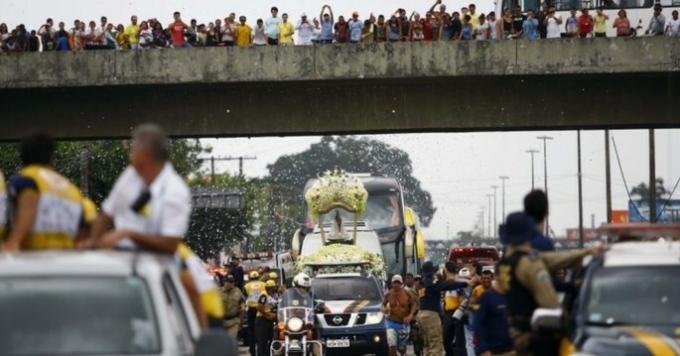O Carnival it has its origins in antiquity with feasts to the gods where a change in the social order was allowed.
In this way, slaves and serfs took over the masters' places and the population took the opportunity to have fun.
Although it is known as the country of Carnival, Brazil is not the only one to celebrate it intensely.
Cities such as Venice (Italy), Nice (France), New Orleans (USA), Canary Islands (Spain), Oruro (Bolivia) and Barranquilla (Colombia), also celebrate the festival in a very lively way.
Origin of Carnival: how the party came about
The origin of Carnival is in the feasts of the gods of antiquity.
In Babylon, the commemoration of the Saceias was held, where a prisoner was allowed to assume the identity of the king for a few days, being killed at the end of the commemoration. There was also a celebration, in the temple of the god Marduk, when the king was beaten and humiliated, confirming his inferiority before the divine figure.
In Ancient Greece, there were parties to celebrate the arrival of spring where the entire population, regardless of birth, was allowed to participate in the event. A similar celebration took place in the Roman Empire, in Saturnália, when people masked themselves and spent days playing, eating and drinking.
The evolution of Carnival
With the rise of Christianity, pagan festivals took on new meanings. Thus, Carnival became the opportunity for the faithful to say goodbye to eating meat. In fact, the word carnival comes from the Latin carnis levale which means “to take away the meat”.
For the Catholic Church, Carnival precedes Lent, the forty-day period before Easter, when the time when Jesus was in the desert and tempted by the devil is remembered.

Since the beginning of its celebration, at Carnival, people could hide or change their identity.
Thus, they had greater freedom to have fun, while being able to acquire characteristics or functions different from what they truly were: poor could be rich, men could be women, among others.

In Venice, nobles wore masks to be able to enjoy the festival with the people and keep their identity hidden. This is the origin of the use of the mask, which is a hallmark of this celebration.
Origin of Carnival in Brazil
In Brazil, Carnival arose with the Shrovetide brought by the Portuguese. This consisted of a game when people threw water, flour, eggs and ink at each other.
For their part, enslaved Africans had fun these days to the sound of drums and rhythms brought from Africa and that would blend with Portuguese musical genres. This mixture would be the origin of the carnival marchinha and samba, among many other musical rhythms.
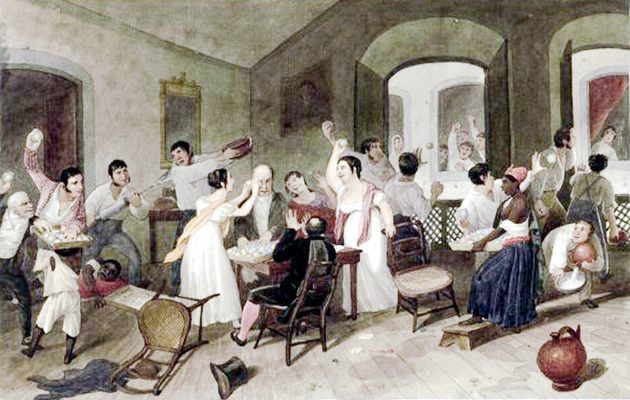
At the beginning of the 20th century, in order to civilize the festival, the practice of throwing flour and water was prohibited. Therefore, people began to import from the carnivals of Paris and Nice the custom of throwing confetti, streamers and bouquets of flowers.
With the popularization of automobiles, the wealthiest families in Rio de Janeiro, Salvador or Recife left with their cars and threw confetti and streamers at passersby.
This tradition continued until the 1930s, when the end of automobile manufacturing was registered. convertibles and also because of the cheapness of vehicles that allowed the popular classes to enter the party.
The street carnival was animated by marchinhas, a musical genre similar to military marches, but faster and with double meaning lyrics. In this way, they criticize society, the political class and the situation in the country in general.
The first Carnival march is considered to be "Ò open wings", written in 1899 by the Rio de Janeiro composer Chiquinha Gonzaga.
The "ranchos", the "carnival societies" and the "cordões" appeared, groups of revelers who went out through the city streets playing marchinhas and making everyone dance.
With the popularization of radio, marchinhas fell into popular taste. Several singers recorded these compositions, but it is worth highlighting the names of Carmem Miranda and Francisco Alves as the greatest interpreters of the genre.
In the 60s, the marchinha gave way to the samba-enredo of the samba schools.

Samba schools
The first association that emerged in Rio de Janeiro was called "Deixa Falar", today "Estácio de Sá", in 1928. The origin of the name "school" is due to the fact that the founders of "Deixa Falar" were in a bar in front of a school.
Nowadays, they receive the official name of "Grêmio Recreativo Escola de Samba", as they are committed to spreading the culture in the community where they operate.
The street carnival in Rio de Janeiro suffered a blow with the construction of the "Sambódromo", which confined the parades to this space. The party started to be broadcast on TV and tickets became more and more expensive.
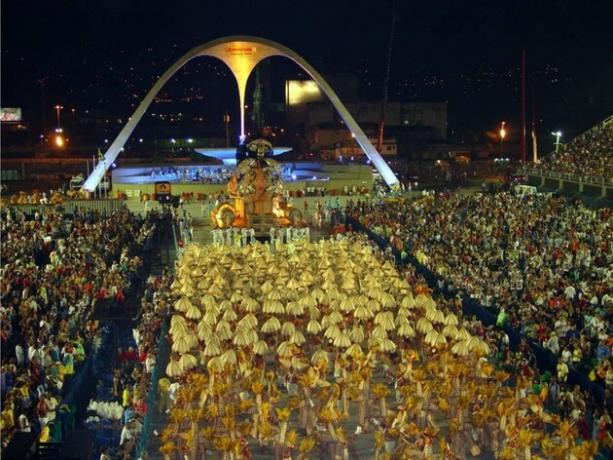
The street carnival survived in the suburbs with groups like the "Cacique de Ramos", in the city center, through blocks like the "Cordão do Bola Preta" and the "Carmelitas". In the South Zone of Rio de Janeiro, there was the "Banda de Ipanema" and even the "Imprensa que eu Gamo", formed by communication professionals.
It seemed that the most popular carioca party would be aimed at tourists, but an amateur theater group, Boitatá, reappeared with the habit of dragging revelers down the street. Currently, almost 500 blocks parade through the streets of Rio de Janeiro.
Carnival in Northeast Brazil
As a country with continental dimensions, each region of Brazil celebrates Carnival in a different way.
Two northeastern capitals, Salvador and Recife, stand out for the beauty of their festival, cultural and musical diversity.
Salvador carnival
In Salvador, the electric trios make the revelers happy. Its origin is linked to the battles of flowers and privateers.
The first electric trio was invented by musicians Dodô and Osmar, in 1950, when they used electric amplification for their musical instruments. From there, the other cars did the same.
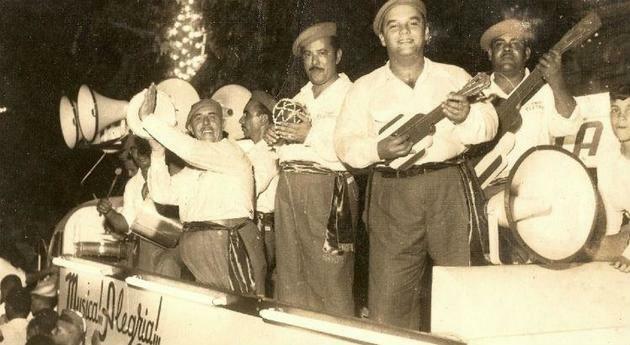
If in Rio de Janeiro marchinhas set the tone for the party, in Bahia samba, batucada, axé, timbalada and large percussion groups such as "Filhos de Gandhi" are the hallmarks of the Bahian party.
Carnival in Recife and Olinda
The carnival party in the capital of Pernambuco and the city of Olinda is animated by frevo. Likewise, the people of Recife use the giant puppets in their parades.
These dolls came from Europe, as in countries such as Spain, huge figures of kings, queens and the court are made that walk around the city in certain religious festivals.
Each year, the associations launch new faces such as football players, actors, deceased personalities, comic book heroes, etc.
Likewise, the puppets are used to make social criticism and it is common to see politicians portrayed by these artists.

Curiosities about Carnival
- The parade of corsican is still a tradition maintained in the Carnival of Teresina, in Piauí.
- In the 1980s, cities like São Paulo and Porto Alegre also built "sambódromos" for the parades of their samba schools.
Whatto knowmore?read:
- Southeast culture
- June parties

